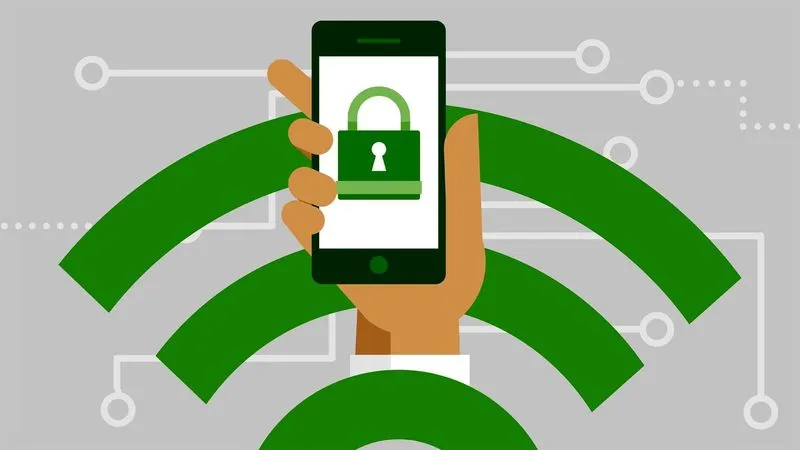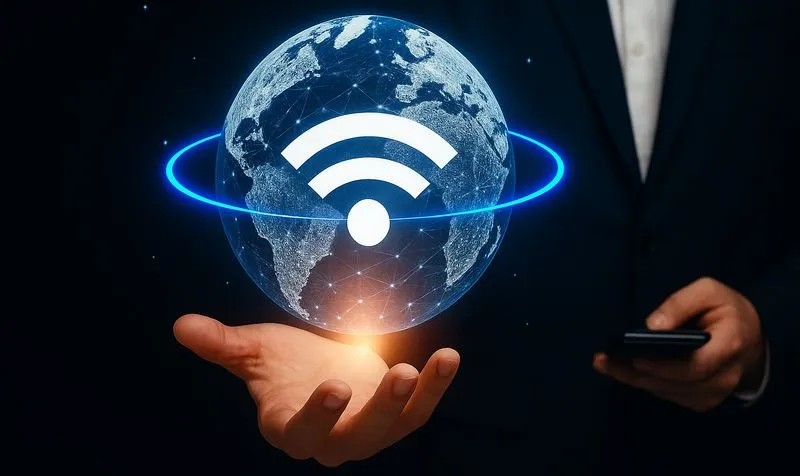Top 10 rules for safe public Wi-Fi use
14.09.2025

It’s hard to imagine daily life without the internet. We connect to Wi-Fi in cafés, hotels, airports, shopping malls, and even on public transport. Free Wi-Fi has become a convenient habit, allowing us to work, communicate, and enjoy entertainment anywhere in the city. But along with this comfort comes a serious risk: open networks can expose you to identity theft, malware infections, and even financial loss. To minimize these risks, it’s important to follow cybersecurity rules and remember that free access is always a compromise between convenience and security.
In this article, we’ll explore the top 10 rules for safe public Wi-Fi use and share additional tips to help you protect your personal data, privacy, and confidence when going online.
Why free Wi-Fi can be dangerous
Before moving on to specific recommendations, it’s important to understand why public hotspots are considered unsafe. Unlike a home router, these networks usually don’t have strong security settings. They’re open to many users, making it easier for attackers to intercept your traffic or inject malicious code.
Main risks include:
- The possibility of connecting to a “rogue” network that mimics a legitimate access point.
- Lack of encryption, which makes your data vulnerable.
- A high chance of picking up viruses or spyware on your device.

Top 10 rules for safe public Wi-Fi use
-
Connect only to trusted networks
Always confirm the exact network name with staff at the location. Hackers often create similar-looking networks to trick inattentive users.
-
Avoid entering sensitive information
Public networks aren’t the place to log into online banking, make purchases, or enter passwords for important services. Even if a network looks secure, it’s safer to wait until you have mobile data or a trusted private connection.
-
Use modern encryption standards
Check if the network uses WPA2 or WPA3. Older protocols like WEP are easily hacked. While it isn’t always simple to verify, larger establishments usually rely on modern standards.
-
Enable two-factor authentication
Even if someone gets hold of your password, an extra verification code makes it much harder for them to access your account.
-
Keep your system and apps updated
New versions of operating systems and apps close vulnerabilities that hackers exploit. Regular updates are a simple but effective protection tool.
-
Turn off automatic connections
Many devices are set to connect automatically to known networks. While handy at home, this feature can expose you to unsafe networks in public places.
-
Use built-in security tools
Most devices have firewalls, antivirus features, and privacy settings. Keep them enabled and check your security settings regularly.
-
Prefer HTTPS websites
Look for the padlock symbol in your browser’s address bar. HTTPS encrypts your connection and reduces the risk of data interception.
-
Disable Bluetooth and file sharing
Don’t forget that Bluetooth and features like AirDrop can also be exploited. Switch them off to limit opportunities for attackers.
-
Use a VPN for extra protection
A VPN isn’t a perfect shield, but it encrypts all your internet traffic, making intercepted data nearly useless to cybercriminals.

Additional tips for maximum protection
The rules above provide a solid foundation, but a few extra habits can help you avoid trouble:
- Regularly clear your browser cache and remove saved passwords.
- Use different passwords for different services.
- Delete public networks from your saved list after disconnecting.
- If you suspect fraudulent activity, change your passwords and scan your devices for malware.
Conclusion: Your security is in your hands
Free Wi-Fi is convenient, but it’s also a potential threat. By following simple, practical steps, you can greatly reduce the risks and use the internet safely wherever you are.
The top 10 rules for safe public Wi-Fi use are more than just theory—they’re a real way to protect your data, finances, and personal information. By making secure habits part of your daily life, you’ll be able to stay online without fear and with confidence that your data is safe.